I Dig Sports
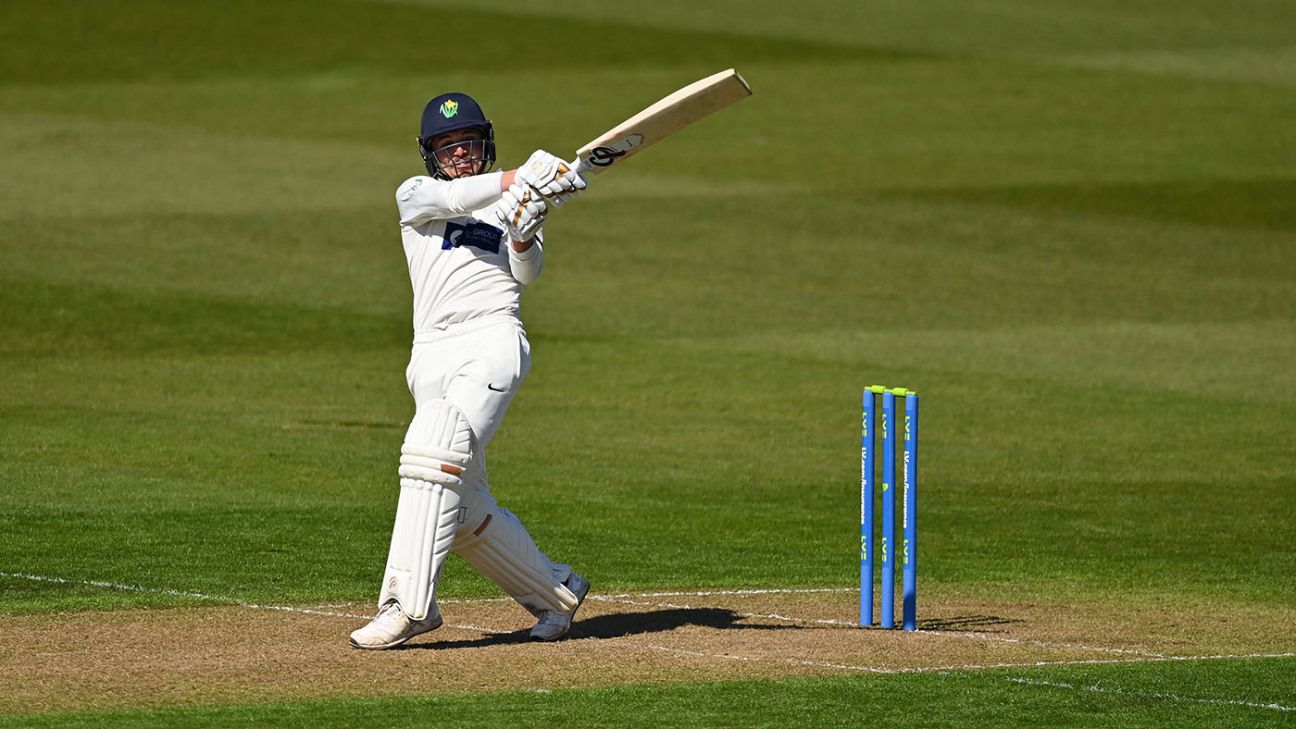
Sussex 99 for 0 (Thomason 52*) trail Glamorgan 285 (Carlson 127, Lloyd 84, Robinson 4-50) by 186 runs
An excellent unbeaten hundred from Kiran Carlson lifted Glamorgan to a respectable score on the first day of Glamorgan's LV=Insurance County Championship match against Sussex as the home side reached 285 all out.
Sussex's openers looked excellent in response, Tom Haines and Aaron Thomason both reaching the close undefeated with their team 99 without loss.
Sussex were on top in the opening overs of the match with Ollie Robinson and Harry Crocombe getting the ball to move late, but Glamorgan came back into it thanks to Carlson's hundred and David Lloyd's 84.
Robinson had Nick Selman trapped lbw with the fourth ball of the match and had Andy Balbirnie dismissed the same way in the seventh over of the Glamorgan innings. When Crocombe got another lbw, this time Billy Root, Glamorgan were 23 for 3 and in serious danger of collapsing.
Lloyd's attacking intent and Carlson's more measured accumulation blunted the Sussex attack, with both particularly brutal to the bowling of George Garton who went for 30 runs from just four overs.
It was Crocombe who ended Lloyd's fine knock of 84 with a ball that bounced and moved away to give Garton a sharp catch at second slip to end a stand of 110 with Carlson.
Carlson remained unflustered as partners fell around him with Glamorgan losing three wickets for 46 runs when Crocombe and Robinson were reintroduced into the attack.
Carlson was lucky to survive on 91 when Tom Clark was edged to Garton at first slip who failed to take the chance diving to his right. Had the chance been taken it would have been a wicket with Clark's first ball in first-class cricket. Carlson made the most of this good fortune, registering his fifth first-class hundred from 152 balls.
An 87-run stand between Carlson and Dan Douthwaite took Glamorgan to 266 for 6. Douthwaite was just starting to open his shoulders and look to score quickly when he mistimed a drive off Stuart Meaker for 36. Three quick wickets from Jack Carson rounded off the Glamorgan innings with Carlson unbeaten on 127.
While Carlson and Lloyd had done well the Sussex opening pair put Glamorgan's efforts into context. Thomason made 52 and Haines 43 with none of the Glamorgan bowlers getting the same movement with the new ball that Robinson and Crocombe had managed.
IPL 2021, match highlights: Delhi Capitals vs Rajasthan Royals
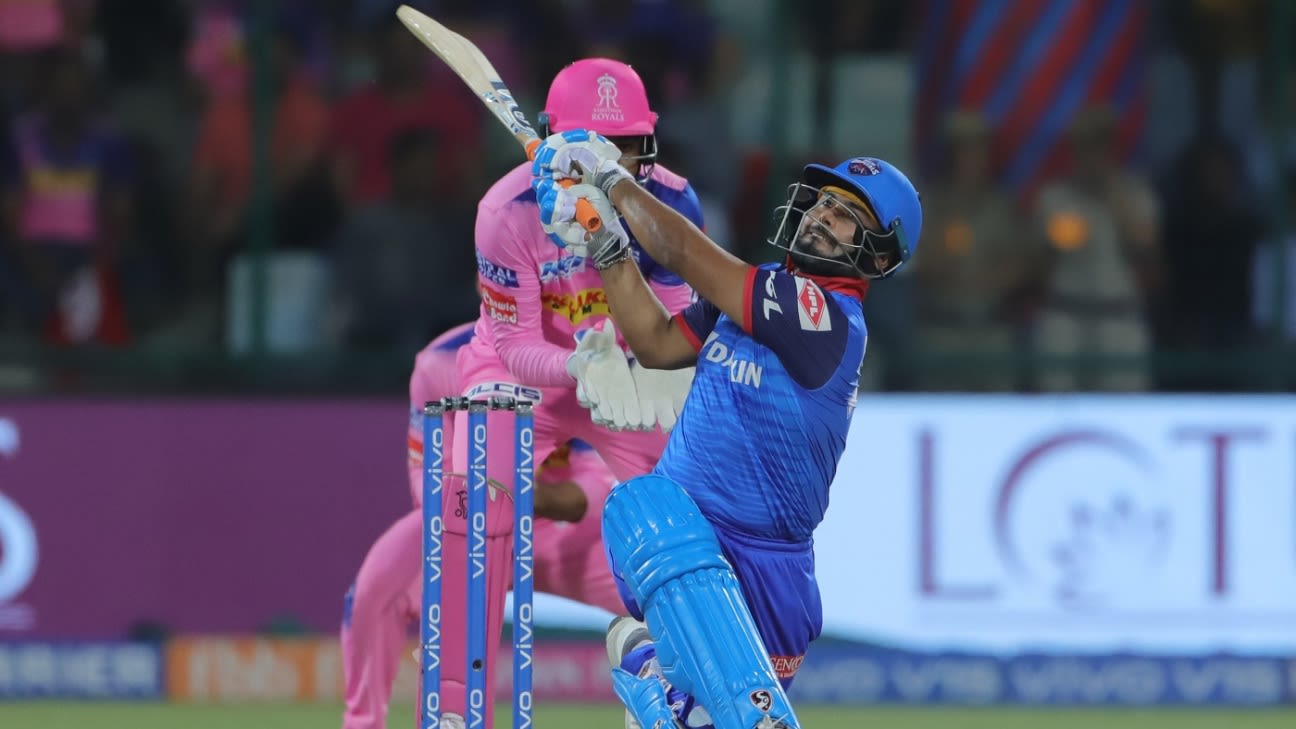
Tonight we have Rishabh Pant's Delhi Capitals facing off against Sanju Samson's Rajasthan Royals. We'll have the likes of Prithvi Shaw, Shikhar Dhawan and Kagiso Rabada against the likes of Jos Buttler, Chris Morris and Mustafizur Rahman. If this blog doesn't load for you, click here. For our ball-by-ball commentary, click here
Sreshth Shah is a sub-editor at ESPNcricinfo. @sreshthx
Ricky Ponting: Not bowling Ashwin out 'probably a mistake on our behalf'

R Ashwin bowled the seventh, ninth and 11th overs of the chase. He conceded 14 runs and no boundaries. He had two left-hand batters to bowl at. Neither of them enjoys a favourable match-up against Ashwin. The dew was setting in, and it would have been difficult to get Ashwin back later if the ball had got wet or if he had right-hand batters to bowl to. Rishabh Pant, though, went to Marcus Stoinis, who conceded 15 in that over, and Ashwin ended the night without bowling his quota in what turned out to be a close defeat.
The move didn't make much sense to those watching nor to the Delhi Capitals coach Ricky Ponting. "That's certainly something that we will talk about when I get a chance to sit down with the team," Ponting said at the post-match press conference. "He had bowled beautifully. Three overs, none for 14. Hadn't even conceded a boundary. Look he had a disappointing game in game one, but he has worked really hard in the last few days to make sure he adjusted and got things right in this game. I thought he bowled beautifully tonight. Probably a mistake on our behalf, and something we will be talking about later on."
Something else that Ponting and the Capitals will be talking about is the sheer number of "slot balls" they gave to Chris Morris in the last two overs, who in turn hit four sixes to run away with a game that had looked like it was in the Capitals' bag. Until the start of the 15th over of the second innings, there hadn't been a single six hit in the game, but the Rajasthan Royals hit seven in the last 4.4 overs to make it home.
Morris might have missed out on a couple of these when the Royals lost to the Punjab Kings chasing 222, but he managed to connect enough of them to sink the Capitals.
"We probably gave him a few too many easy balls, a few too many slot balls if you like," Ponting said. "The length wasn't quite where it needed to be. If you look at the replay of the game, if you bowled a reasonable yorker, he didn't score off them. If it was back of a length, sort of, above stump high, he didn't get hold of them either, especially with pace on the ball. We talked about how to bowl to him, but the execution probably wasn't there."
It is not entirely a coincidence that the errors increased as the dew set in. "The other thing you have got to factor in is just how wet and how dewy the ball was in the second innings of the game," Ponting said. "It wasn't easy for the bowlers to grip. You could see it at the end there. There were a few full tosses that fast bowlers bowled with the ball slipping out of their hand a little bit. That's part and parcel of IPL cricket. We knew coming here that there will be a little bit of dew in the second half of the game. And we didn't adapt, and we didn't execute as well as we could have tonight.
"Till around the 13th-over mark in our bowling innings, the second innings of the game, everything was going according to plan. We made a few errors coming in the last four or five overs of the game. When you are a little bit off against any team in the IPL, just bowl a couple of bad balls or just a couple of those here and there, it is quite often the difference in the outcome. We didn't get things right at the back end tonight."
Sidharth Monga is an assistant editor at ESPNcricinfo
Martin's mea culpa: 'Poor job' with Gamecocks
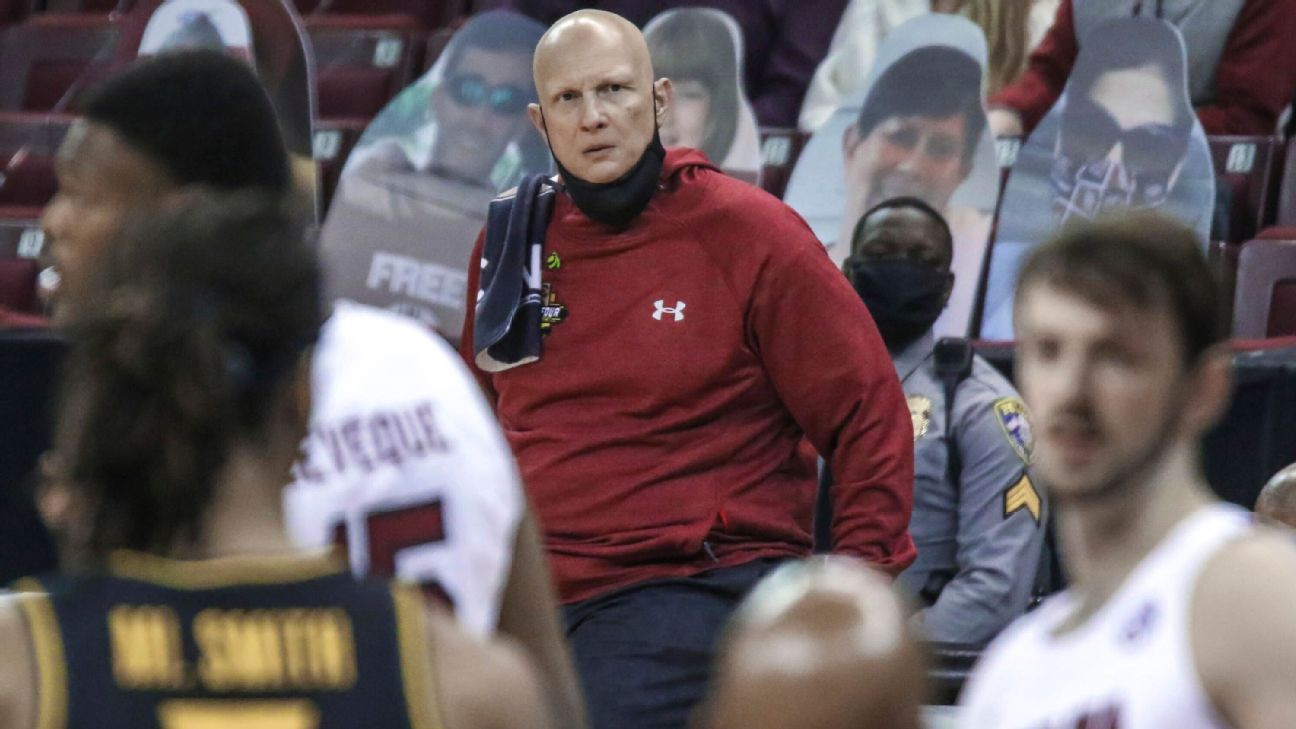
South Carolina's Frank Martin admits he did a bad job as men's basketball coach last season. He also believes his track record shows that he knows how to turn things around.
"I did a poor job of leading this year," Martin said Thursday of the Gamecocks' 6-15 season, the worst showing in his 14 years of coaching at Kansas State and South Carolina.
South Carolina never found its footing, and Martin acknowledged he couldn't help his players get in rhythm.
"We've got work to do, man," he said. "What happened last year was unacceptable. I think I'm going to bet on myself that I'll figure this one out."
The coronavirus pandemic certainly played a role. There were two program shutdowns over a stretch of 41 days in which the Gamecocks played just twice and did not have a complete team to practice because of medical protocols.
Martin tested positive for COVID-19 twice since May, the second time a more serious illness during South Carolina's dormant period in January.
Martin remains confident he can steady things going forward. He has done it before, he noted, taking a South Carolina team that was last in the SEC the year before his arrival in 2013 to the Final Four in 2017. At 18-13, the Gamecocks were on the NCAA tournament bubble in 2020 before the pandemic canceled the event.
He got some breathing room last week to make that happen with a two-year contract extension that ties him to the program through the 2024-25 season. There was no raise. Plus, Martin's buyout of $6.5 million if he were let go right now would be reduced to zero should the school fire him after two more years.
"Is it the contract I wanted? No," Martin said. "But if they didn't want me here, they could've fired me."
Martin said he had lengthy, candid conversations with athletic director Ray Tanner reviewing why things went wrong last season. Tanner said he was confident Martin had a plan to get things fixed and recommended the extension to school president Bob Caslen.
"This was a decision I think we collectively made, which was the best interest of the university," Caslen said earlier this week.
The new contract came after South Carolina was placed on two years' probation in February for bribes accepted by former assistant coach Lamont Evans.
Martin will have a different roster to help him try to get back to winning. Five members of the team, including fourth-year forward Justin Minaya, have entered the transfer portal.
The Gamecocks have added four transfers, led by 6-foot-3 guard Erik Stevenson, who will join his third Division I school after playing at Wichita State for two seasons and Washington last season.
Two starters and double-digit scorers, forward Keyshawn Bryant and point guard Jermaine Couisnard, are going through the NBA draft process but have not signed with agents. Martin said both have been at offseason workouts and that he expects them to return.
The wait will be longer for the team's top scorer last season, 6-foot-6 AJ Lawson, to decide his plans for 2021-22. He averaged 16.6 points per game in 2020-21. Because Lawson went through the NBA draft evaluations the past two seasons, Martin said he doesn't have the option to come back this time if he decides to go pro.
"He's being careful," Martin said.
Martin put no stock in speculation he would be fired or that he was scanning the coaching openings for another job. He said he never was looking to leave, instead using the past month to figure out how to fix what went wrong.
"I don't get caught up in innuendos. I don't get caught up in false narratives," he said. "This month has been frustrating for me because I didn't do my job, not for anything else."
The Associated Press contributed to this report.
NFL draft board building 101: Inside the secretive yearlong grind
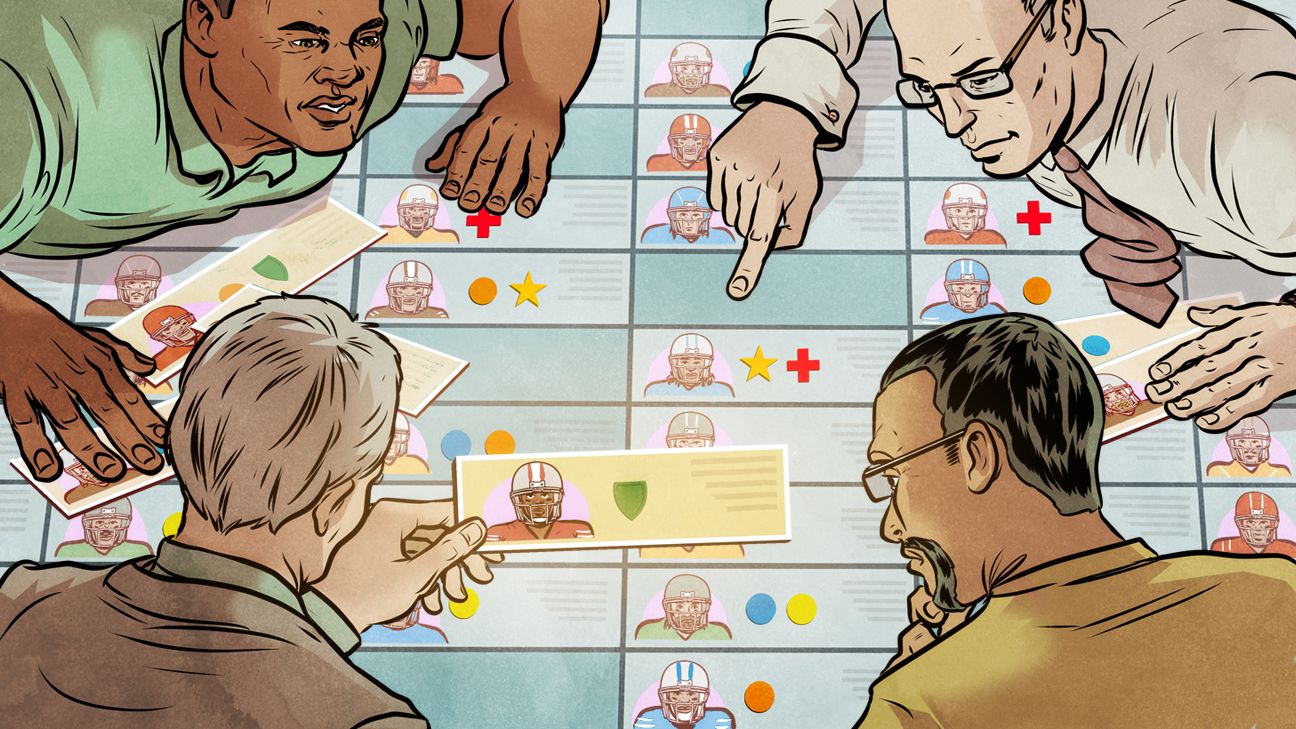
It is universal. It is unique.
It is stacked, adjusted and set. It is mocked, remocked and mocked again.
But unless you are one of the cooks in the proverbial football kitchen, you haven't seen it. It is the stew that everyone in the NFL makes and whose recipe is hidden from anyone outside the family.
It is the NFL draft board, a place where player rankings are handed out, complete with concerns, questions and the sometimes tenuous hope of finding the league's next big star.
And contrary to the notion of a "draft season," the blueprint to each team's draft weekend is a year in the making.
Yet how the NFL draft board is built, how it looks and what is on it -- names, symbols, grades -- isn't really a topic for conversation outside the conference rooms or laptops where the boards are hidden.
How secretive is it? Just before the 2000 draft, when the Tennessee Titans had the 30th pick in the first round, then-Titans general manager Floyd Reese was asked who the 30th player on his board was, to which he replied, "Well, that's one of my favorites, looking real hard there, that would be the guy between 'None Of' and 'Your Damn Business.'"
To build the board, no one is above asking for guidance from myriad sources, be they human, data or spiritual.
"[Hall of Fame team executive] Ron Wolf would always let me put something on the draft board that was blessed by the pope," said Bryan Broaddus, who worked in the scouting departments of the Eagles, Packers and Cowboys during his career. The item was something small enough it could fit in a plastic bag, but it had a papal blessing. "After the first year we did it, it was just kind of accepted after that. You'll take all the help you can get and it went on the top of the board.
"Sometimes I would just sit there, in the room, with all those names and just wish, somehow, the future Hall of Famers would just light up, so then you would know. You just want to get it right."
ESPN conducted dozens of interviews in recent weeks asking about the nuts and bolts of building a draft board. Those calls, combined with 35 years of reporting on many of those who grade the players and stack the boards, have helped shape an insider's look at the process.
Each board is unique to its team and decision-makers, but one thing remains the same: The path to the draft is not a sprint after the calendar flips to February. It is a long, grueling, opinion-filled, argument-spiced marathon through an entire year.
The first meeting
The first step toward the next draft is often taken before the last piece of confetti from the previous draft has even drifted to the ground.
Former Titans scouting director Blake Beddingfield, who was in that position for 19 seasons, said the first meeting with the team scouts was almost always "the week after the draft, just before rookie camp." Former Jets general manager and Dolphins executive VP of football operations Mike Tannenbaum said "about Memorial Day, every time."
Some teams choose to go it alone, but most teams use either National Scouting -- which runs the combine every year -- or Blesto scouting services to help with their initial list of college football seniors as well as reports from their own scouts on players they may have seen in their campus visits.
That first list of players can be in the hundreds -- some said as many as 900 names or more.
Scouts are often brought back to the team complex -- in a non-pandemic year -- in early June, around the team's minicamp, to discuss the top prospects in each region heading into the college football season. From those meetings, the fall schedule for the area scouts -- those who cover a specific geographical area of the country or specific conferences -- will take shape.
Often the players are ranked for the first time at these meetings, and those rankings are adjusted throughout the college football season as reports from the scouts come in and the scouting director evaluates each prospect's grade after the visits.
The season
Denver Broncos general manager George Paton said the process of building a draft board includes "no shortcuts" and those involved have "to embrace the day-to-day ... embrace the grind."
Hundreds of plane tickets, thousands of highway miles, night after night in hotel rooms are on deck. It's not uncommon for scouts to have hotel points in the millions.
The schedule will vary slightly from team to team and depends on the size of each scouting staff. But at the foundation during the college football season are the area scouts, who will each have to visit roughly five schools a week. A visit will entail a heavy dose of game video review and speaking with coaches as well as other support personnel about prospects.
At some of the larger college programs, these visits are limited and must be scheduled on specific dates during the season.
Knowledge is always power. Longtime scout C.O. Brocato, who died of cancer in 2015, would fill the trunk of his car with T-shirts, hats and other team gear from the Houston Oilers (and later the Titans) to give to staffers, security guards and receptionists at many of his campus stops. He knew their names, and an open door often followed a smile.
Known over a four-decade career to start his day at 2 a.m. in order to drive to stops across the vast expanse of Texas and the South, Bracato always joked that the first scout in "gets the clicker" to control the viewing of game video and "I like the clicker."
After each visit, a scout may write a report for between eight to 12 players at the bigger schools, two or three at the smaller schools. Each week each scout sends those reports to the team's scouting director.
The reports will include basic background, physical characteristics (height, weight and other general information like quickness or agility) and position-specific items such as how each prospect's traits fit the position he plays and where he would fit in the team's profile for that position.
It isn't enough to say a player is good or bad. Details and specifics are coveted. Scouts who pay attention to detail and write meticulous reports quickly can be one of the most important aspects of a quality draft class.
Do the math: About five or six area scouts each sending between 40 to 60 player reports each week -- it's about 200 to 360 in all. Again the guidelines vary, but generally scouts have to visit schools with players who have draftable grades in their areas two or three times a season, with one of those three required to be a game day.
Some schools, smaller programs that may have one or two players with draftable grades in a given year, may be visited once, but area scouts will often circle back to those schools as well if they find they have a free afternoon.
Some positions, like quarterback and safety, may require more visits. Some teams will add a national scout -- referred to as an "over the top" scout or "cross-checker" -- or the college scouting director, the general manager or assistant general manager to the mix for more looks or "exposures" at a prospect, particularly on a game day.
"The challenge," former Broncos general manager Ted Sundquist said, "is always staying organized, keeping the board up to date, making sure the reports are detailed and finding the spots where the scout's grade and the scouting director's grade may vary, things like that. But big or small school, you just don't want to miss anybody."
This year, with some players having opted out of the 2020 season because of COVID-19 concerns, there was a hearty review of 2019 game video, digging on player's backgrounds and where they were working out, along with any added information from pro days or interviews with team officials.
A rainbow of symbols
It isn't just football information in the scouting reports. Before the draft, the team's medical staff is going to be involved, background checks are carried out and the elements of a prospect's résumé off the field are added to the grade.
Teams use a variety of colors and symbols to note different issues about some prospects. Sometimes it is as simple as a red cross for an injury question or a yellow dot (proceed with caution, as one scout put it) for off-the-field issues, a green shield for effort questions, a skull and crossbones if a player has a difficult agent, or a star for a low test score.
In the end, players who stand out for the wrong reasons are referred to by some as "rainbow players" because they have so many symbols of different colors next to their names.
This will also vary from team to team. Some medical staffs will flag a player's injury as a concern when others will not. Some general managers will be more comfortable with a player's explanation of past trouble than others. A fight with a teammate, an arrest in high school, a failed drug test, a transfer to another school with a hazy backstory, an injury during a January workout -- all of it is in the symbols.
As an example, last April several teams went into the draft concerned about the long-term impact of quarterback Tua Tagovailoa's hip injury suffered in his final season at Alabama. Tagovailoa, however, was selected fifth overall by the Miami Dolphins and is poised to be the Dolphins' starter this season.
In 2019, Mississippi State's Jeffery Simmons was not invited to the scouting combine despite being considered a potential first-round pick because a video from 2016 had surfaced of him punching a woman multiple times during an altercation the woman had with his sister. Simmons had also torn an ACL during a pre-draft workout.
Some teams had removed Simmons from consideration, but the Titans selected him with the 19th pick. Titans controlling owner Amy Adams Strunk said following the draft she had never been more involved in vetting a player before than with Simmons, including viewing the video with Titans coach Mike Vrabel and general manager Jon Robinson.
Simmons has started 22 games over the past two seasons with the Titans.
Beyond the symbols, how the boards look will vary. From the early days of chalkboards to electronic boards for some teams today, it's always evolving and is often kept secret. But whether it's a whiteboard or a magnetic board, names will be stacked in the order of their grades. That's anywhere from 120 to 180 players for most teams.
It takes up the entire wall of a large conference room.
Then there are hundreds of names on another wall of the players the team graded, but who were removed from consideration because of questions, including injuries.
Teams augment this with the use of overhead projectors so they can display the same information from a laptop onto a wall as well. It allows them to move meetings from room to room and use the information about a particular player or particular position in smaller meetings.
It's the rainbow of symbols, though, that often leads to some of the biggest differences of opinions among teams on top prospects. Those symbols explain why some teams will take a player off the board while others will select the same player in the first round. Many of those surveyed for this story said there is always an uncomfortable silence in draft rooms when a player who had been taken off the board is selected early, especially in the first two rounds. It's "that we-better-be-right feeling" after the guy was picked somewhere else, "especially in the division," as one scout said.
Last call for info
After the bowl games there are the all-star games and scouting combine -- this year's was canceled because of COVID-19 concerns -- and then on-campus pro days and visits to the team complexes (in a non-COVID-19 year). At this point, the teams who feel good about their scouting staffs and the information they've gathered will have boards largely set.
The scouting director has spent months reviewing the weekly reports and game video and had hours' worth of discussions with the scouts as the reports have come in. It means the notion of "risers" and "fallers" on the draft board, at least according to those who build the boards, is far less pronounced than it is often portrayed.
Beddingfield said "usually 80 to 85% or more of a guy's grade came in the season," and Tannenbaum added, "Late information isn't always great information; you have to be mindful of that."
Teams will often adjust a prospect's standing within his position group or within the round of the draft where graded. But most say it is rare for players to jump or drop one full round, let alone multiple rounds, because of Senior Bowl practices, a pro day or the combine.
This year will offer some slight differences due to opt-outs or canceled games because of COVID-19. A player such as Wisconsin-Whitewater offensive lineman Quinn Meinerz had his team's season canceled because of the pandemic, but he showed up to the Senior Bowl practices "looking like a different guy" than he had in 2019, according to one scout. Players like Meinerz may move around more on draft boards than in years past, but those big fluctuations will still be exceptions rather than the rule.
At times a prospect's performance in a workout or the practices at an all-star game can slightly tip the scales about what position that prospect may play. For example, before the 2020 scouting combine, some personnel executives wondered whether Notre Dame wide receiver Chase Claypool would really be a receiving tight end because of his size (he was measured at 6-foot-4¼ and weighed 238 pounds at that combine).
Then Claypool blistered the 40-yard dash in 4.42 seconds -- among the fastest at any position of the players invited -- to go with a 40½-inch vertical jump, and many in the league left Indianapolis thinking of Claypool as a wide receiver. The Pittsburgh Steelers selected him in the second round, 49th overall. Claypool finished his rookie year with 62 receptions, 879 yards and nine touchdowns.
Movement on the board after the college football season is far more subtle, subdued and nuanced within the tiered groupings than often perceived. The advent of pro days and combine workouts on TV -- and so much more draft coverage overall than even a decade ago -- have made the concept of movement on draft boards appear larger than it is inside team complexes.
A caveat is an arrest or a significant off-the-field issue that happens between the end of the college football season and the draft. It's why teams have people in the scouting department monitoring social media throughout the draft process to try to avoid the surprise of a video that goes viral the morning of a draft.
"You confirm something you wanted another look at, get an answer to a particular thing you needed, whether that's medical, something athletically, or an off-the-field thing you wanted an answer to," one longtime personnel executive said. "You'll move a guy some within his group, but jumping up from one group to the next or down multiple groups or multiple rounds, the teams that do that probably didn't get enough information from the area scout during the year. Does it happen? Yes, but rarely is it a big, big move."
Lock it in
When draft weekend arrives, the number of players on the board will vary team to team.
The list of players a team would draft -- the board they're working off during draft weekend -- has often been called the "value board," essentially the players each team really likes and would select because they fit the team's position profiles and scheme.
As scouting staffs have grown and the process has become more refined, 300-player draft boards are largely gone. Most teams have between 125 and 150 names on the value board. And when those players are selected, by any team, the names are taken down.
If they've done the work correctly, when all the draft picks are made -- some 240 or 250 picks or so, including compensatory picks -- a team might have just a handful of names remaining on a well-built value board. Those are the first choices to sign as undrafted rookies.
While it isn't considered as common, there are teams and general managers who will work what some personnel executives have called a "short board," which might have 75 to 95 names.
A shorter board may force teams to trade out of a round when they have no players graded to that round. If the team doesn't trade out, it could find itself taking a player it didn't have graded anywhere close to that round.
An example of an overreach can be found with the Broncos in the 2010 draft. Many with the team at the time said the Broncos used a short board approach that year -- Josh McDaniels' second season as coach -- with fewer than 100 players on it. Among the players they selected was North Carolina tight end Richard Quinn in the second round (64th overall) -- their third second-round pick. No other team contacted in the weeks after the draft had a grade above the seventh round on Quinn, who had 12 receptions during his career at North Carolina. Quinn said later his agent had told him not to expect to be drafted.
He played 30 NFL games with two teams and finished his career with one catch.
"Anybody who has worked the job would say, retrospectively, most any time we made changes late I wished we had not," Tannenbaum said. "But that's why it's important to have good evaluators among your scouts who give you the information you need to make the best board you can make."
The value board comprises the "best players available" who also fill needs, including those who would be the best specific scheme fits with the current coaching staff.
The remainder of players with draftable grades -- but who might have symbols next to their name or do not fit into a team's system -- are listed on another board, or list, sometimes called the "back board" or the "out board" to monitor where they are chosen.
"And you try to kind of get a feel for how the board is going to go around the league, kind of work through all the scenarios with potential trades," Broncos president of football operations John Elway said. "Just make sure you're ready to adjust and move and feel good as an organization about your evaluations. And in the back of your mind you kind of know there is no predicting what everybody is going to do -- the curveball is coming."
Make the picks
Let's start with the draft's dirty little secret about the first round. There are never, ever 32 first-round grades on draft boards throughout the league.
Want to know why teams bail out of the bottom of the first round so often? It's because all of the players they had with first-round grades are gone. Or why a team quickly trades back into the No. 32 spot as the clock winds down? They want to snatch up the player still on their board with a first-round grade who has not been selected.
During dozens of interviews in recent weeks, the highest total given for first-round grades in any draft was 27 -- and one general manager said, "You knew that was going to be a damn good draft." The lowest? Seventeen.
Beddingfield said scouts are among the most nervous and engaged on draft weekend. And emotional investment is the biggest reason. "I always battled for them to be in the room with everybody when we made the picks," Beddingfield said. "Some GMs didn't want that, but I made it a priority. You're telling those guys their work is important when they're in there and there is tremendous pride when after all those weeks, the team turns in a card for the pick with a guy you looked at from Day 1."
All of the people asked about this -- every single one -- said the teams that "stick to the board" do the best in the draft year after year. The lure of the late nugget of information, a "gut feel" in the final hours, should be discussed and dissected to make sure the change is actually a good one.
It is important for a general manager to create an environment where the scouts and others will speak up. Often the didn't-stick-to-the-board picks result because those who made the grades don't feel they can stand up to those making the picks. "And you better be a good listener as a GM," Tannenbaum said. "If you're going to stray from the board, you better have a good reason why you didn't think that way before and you better ask the guys who saw the player all season. And it should make you pause."
The so-called "pounding the table" for prospects a scout or a coach likes has to largely take place weeks before the draft, not draft weekend. There are ties to be broken in the minutes before the picks when the arguments may get the loudest, but as one general manager put it, "the ties better be between players you liked all the way through."
And virtually all of those interviewed said they believed most people not involved in the process would be surprised by how much the grades, the boards and where players are valued can vary from team to team. One team's potential steal is another team's name removed from the board deemed to have no chance.
In 2009, the Raiders selected Ohio University safety Mike Mitchell with the 47th pick overall, a major surprise to most. ESPN's Mel Kiper Jr. said he had a seventh-round grade on Mitchell, and some teams privately said they didn't have him among their top 280 players.
Mitchell then fueled some of that skepticism when he started nine games in his first four seasons, though he would go on to play 10 seasons overall with five years as a regular starter.
"The board is players you like; other people may not, but you do," is how one longtime personnel executive put it. "Sometimes you're not right until a few years out and sometimes you're not right until the guy goes somewhere else because they fit him better or he gets healthier or he just develops. Fit, the developmental curve, coaching, the guy's work ethic, maturity, it all can add up differently and those are the questions you're trying to answer when you make the picks."
After the picks are made -- or even as the seventh round gets underway -- the scramble begins for the undrafted players. It is inevitable with so many opinions on so many players around the league, players with fifth-, sixth- or seventh-round grades are left on a board. Some draft boards will simply have a large red line to mark where the draftable grades stop; the group of players posted below it are that team's priority free agents.
Scouts, assistant coaches, assistant general managers, general managers and head coaches acting as closers scramble to get the best of the rest signed as undrafted players.
"A seven-round draft, there are good football players who fit what you do still on the board after the picks are done if you've stacked it right, and they didn't get picked just because of the way things fell," Elway said. "We want to find guys who can be Denver Broncos wherever we have to find them."
It's why scouting is so important and why Elway often opened media gatherings after the draft each year by naming, and thanking, each of the team's scouts and other scouting personnel.
"Those guys are on the road, and it gets lonely out there sometimes," Elway has said. "They do a hell of a job and we ask a lot of them."
Rinse, repeat
Beddingfield said rookie camp, usually in May, was always the last pit-of-the-stomach feeling for a scout moving from one draft to the next.
"You just didn't want to go out at rookie camp and see a guy you really fought for struggle; you wanted him to get off to a good start," Beddingfield said. "Crazy to think that way because he's just getting started, but in that moment, in the back of your mind, it's all those nights, all that road traveled, how much you like the kid. You just want it to look like it's going to be great. And when he goes on to be great, there is nothing better. But you finish that camp and you hit the road again."
Tannenbaum said: "Sometimes people would kind of say we made all those reports and we only took seven players. My response always was, 'We just made the first report for our pro personnel department on the other guys. They go right to that database so you have it in September when they get cut or two Septembers from now.' When it's over, there's relief, exhaustion and the 10-minute feel-good, that absence of agony that makes you feel so good. And then you start again."
Sources: LaVine in protocol, likely to miss games

Chicago Bulls All-Star guard Zach LaVine is expected to miss several games after entering into the NBA's health and safety protocol, sources told ESPN.
The Bulls called off practice Thursday because of health and safety protocol concerns, the team said.
Chicago's playoff hopes have been dampened lately, as the Bulls have dropped four straight games to fall to 22-32. The Bulls are currently 10th in the Eastern Conference, holding the final spot in the play-in tournament.
LaVine is averaging a career-high 27.5 points per game this season.
Nets' Aldridge abruptly retires due to health scare

NEW YORK -- Brooklyn Nets center LaMarcus Aldridge announced on Twitter on Thursday that he is retiring from the NBA after experiencing an irregular heartbeat during his final appearance with the team.
"For 15 years I've put basketball first," Aldridge wrote. "And now, it is time to put my health and family first."
Aldridge, 35, said he experienced the irregular heartbeat during the Nets' game against the Los Angeles Lakers on Saturday, after which his condition worsened.
"The next morning, I told the team what was going on and they were great getting me to the hospital," Aldridge wrote. "Though I'm better now, what I felt with my heart that night was still one of the scariest things I've experienced."
— LaMarcus Aldridge (@aldridge_12) April 15, 2021
Aldridge had missed the Nets' past two games with what the team called a non-COVID-19 illness.
Nets general manager Sean Marks said the team fully supports Aldridge's decision to retire.
"We know this was not an easy decision for him, but after careful consideration and consultation with medical experts, he made the best decision for him, his family and for his life after basketball," Marks said in a statement.
During an appearance on ESPN's Jalen & Jacoby, former Trailblazers teammate Damian Lillard said he was "shocked" to hear the news of Aldridge's retirement.
"I think in a situation like this basketball is the least of his concerns and everyone else's concern," said Lillard. "So I'm sure it was a tough decision for him, but I'm glad he made the decision in the best interest of him and his family."
In 2007, Aldridge was diagnosed with Wolff-Parkinson-White syndrome, "an extra electrical pathway between your heart's upper and lower chambers that causes a rapid heartbeat," according to the Mayo Clinic. It is not clear if Aldridge's recent scare is related to that condition.
Aldridge signed with the Nets on March 28 after agreeing to a buyout with the San Antonio Spurs, where he had spent the previous 5½ seasons. The seven-time All-Star spent the first nine years of his career with the Portland Trail Blazers.
Information from the Associated Press was used in this report.
MJ to serve as Kobe's presenter at Naismith HOF
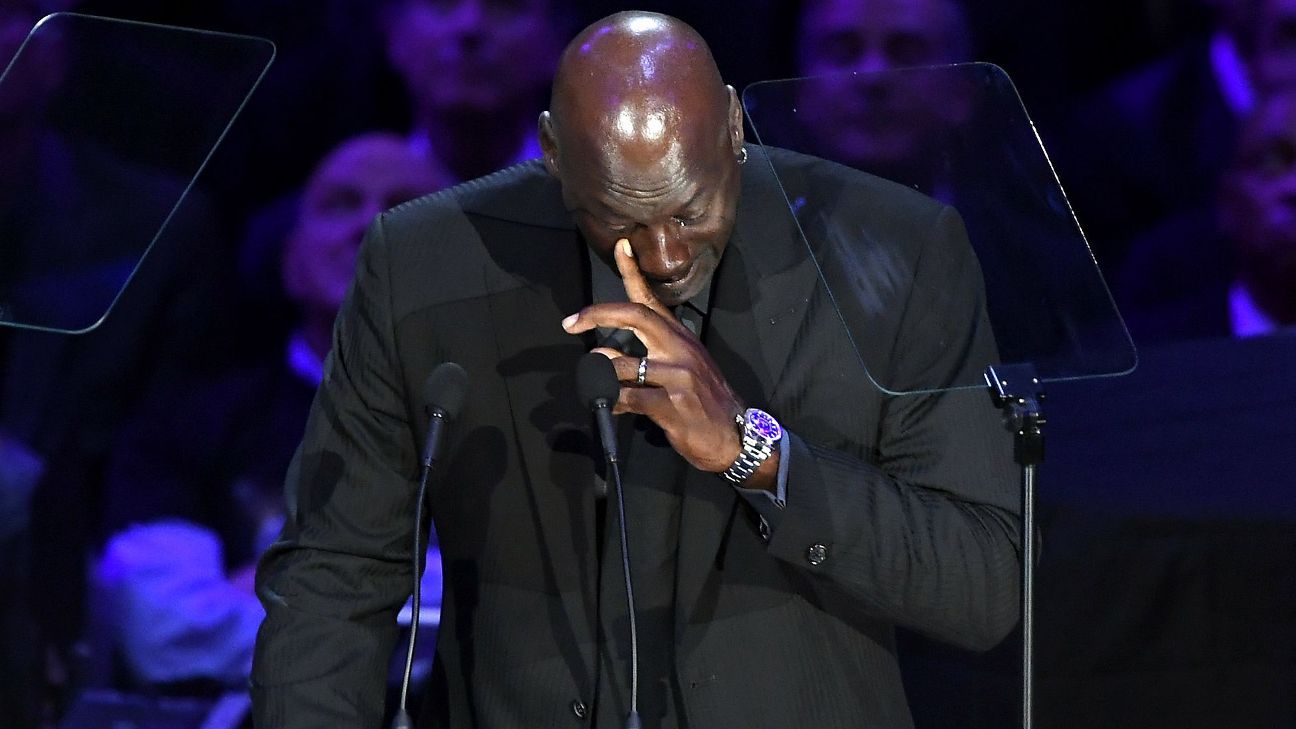
The Naismith Memorial Basketball Hall of Fame has announced the list of Hall of Famers scheduled to present the 2020 class of honorees -- led by Michael Jordan honoring Kobe Bryant.
Jordan, who spoke at Bryant's memorial service in February 2020, will also introduce Baylor women's coach Kim Mulkey, making him the only Hall of Famer presenting multiple candidates during this year's induction ceremony.
The connection between Jordan -- arguably the greatest player of all time -- and Bryant -- who did everything he could to emulate his idol -- was far deeper than anyone knew, though that only came to light when Jordan gave his heartfelt speech at the memorial service following Bryant's death in a helicopter crash.
"At first, it was an aggravation," Jordan said of Bryant constantly peppering him with questions early in his career. "Then it became a passion.
"As I got to know him, I wanted to be the best big brother I could be."
Bryant is far from the only big name in the 2020 class, which is being honored on May 15 due to the COVID-19 pandemic. Fellow first-ballot inductees Tim Duncan and Kevin Garnett will be introduced by David Robinson and Isiah Thomas, respectively, while Rudy Tomjanovich, the two-time NBA champion coach of the Houston Rockets, will be presented by franchise icons Hakeem Olajuwon and Calvin Murphy.
Eddie Sutton, who made three Final Fours and was the national college coach of the year four times, will be presented by former player Sidney Moncrief, former assistant and Kansas coach Bill Self, and Kentucky coach John Calipari. Sutton died last May. Five-time Division II national coach of the year Barbara Stevens will be introduced by Connecticut coach Geno Auriemma and former Notre Dame coach Muffet McGraw; WNBA legend Tamika Catchings will be presented by Alonzo Mourning and South Carolina coach Dawn Staley; and longtime FIBA executive Patrick Baumann will be introduced by former NBA deputy commissioner Russ Granik and Vlade Divac. Baumann died in 2018.
The inductees or their families had the opportunity to choose previous Hall of Famers to introduce them.
LaMarcus Aldridge announced his retirement and NBA twitter reacted

Only a few weeks after signing with the Brooklyn Nets, seven-time NBA All-Star LaMarcus Aldridge announced his retirement on social media.
"My last game I played while dealing with an irregular heartbeat," Aldridge wrote. "Later on that night, my rhythm got even worse which really worried me even more. The next morning, I told the team what was going on and they were great getting me to the hospital and getting me checked out. Though I'm better now, what I felt with my heart that night was still one of the scariest things I've experienced. With that being said, I've made the difficult decision to retire from the NBA. For 15 years, I've put basketball first, and now, it is time to put my health and family first."
Aldridge, the second overall pick in the 2006 NBA draft, spent his career with the Portland Trail Blazers and San Antonio Spurs before signing with the Nets. Players from around the NBA were shocked at Aldridge's abrupt retirement but showed him support in his difficult decision.
Statement from our GM Sean Marks on the retirement of LaMarcus Aldridge: pic.twitter.com/3WKRJgAmpn
— Brooklyn Nets (@BrooklynNets) April 15, 2021
One of the toughest match ups I had to face! Congratulations on an amazing career! Enjoy family time... https://t.co/1wNKwK5iJ7
— Nikola Vucevic (@NikolaVucevic) April 15, 2021
Legendary run my brother! ?????? https://t.co/oCAzEzRLdk
— Danny Green (@DGreen_14) April 15, 2021
Congrats LA! Midrange King. Enjoy your life fam! ???? https://t.co/Fvhrr2l1FX
— Bradley Beal (@RealDealBeal23) April 15, 2021
Helluva career! Wishing you nothing but health brotha ?? https://t.co/MvrBkrZLG8
— Jared Dudley (@JaredDudley619) April 15, 2021
It was an absolute honor to play with you my brother. I wish you nothing but the best for you and your family. Take care my brother #TheLtraaaaaaaiiiiiiiiin ? pic.twitter.com/GZqDywRylj
— Nicolas Batum (@nicolas88batum) April 15, 2021
Hall of fame career and even better person!!! Salute to you killa @aldridge_12 ?? https://t.co/fACGNaidkU
— Isaiah Thomas (@isaiahthomas) April 15, 2021
— Rudy Gobert (@rudygobert27) April 15, 2021
Always remember the good times, particularly those at McLoughlin Auto Mall #RipCity https://t.co/Bb7hfYaoe4
— Robin Lopez (@rolopez42) April 15, 2021
Morocco Diamond League to relocate to Gateshead
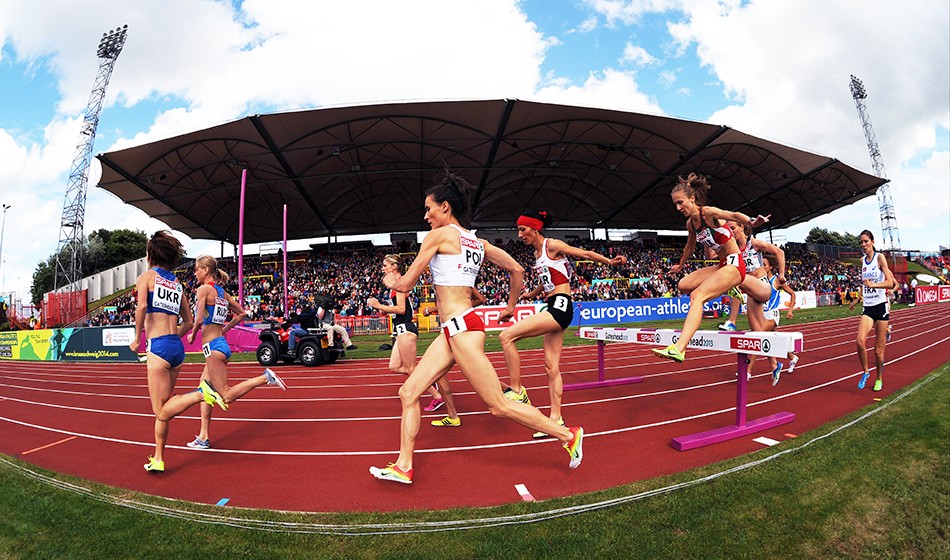
Pandemic causes first Diamond League of the season to switch from Rabat to North East England
Britain looks likely to host the first meet of the 2021 Diamond League as it is expected that the Rabat Diamond League will be relocated to Gateshead due to coronavirus concerns in Morocco.
AW understands that the opening meet, scheduled for May 23, can no longer be held in the Moroccan capital due to continuing COVID-19 worries. However, this offers another chance for British fans to see some of the world’s best athletes ahead of the Anniversary Games leg of the Diamond League in London on July 13.
The move comes just a short time after the Gateshead leg of the Diamond League was removed from the calendar and means that Britain will again host two Diamond League events in a year.
British athletes are expected to have the opportunity to compete on home soil as they continue their preparations for the postponed Tokyo Olympics with UK Athletics said to be deliberating over how best to allow this while keeping them safe.
Should the current Government roadmap stay on track, the event would take place a week after the next phase of restrictions are lifted. This would mean 4000 spectators could be permitted at sporting events although the Gateshead figure could be nearer 2000 to 3000.
Pic: Mark Shearman
UKA and the Diamond League are expected to make official announcements on Friday confirming the event and providing details for athletes and spectators.
Gateshead has a long and proud history of staging world-class athletics. The track saw a world 3000m record from local hero Brendan Foster in 1974, pole vault world records by Yelena Isinbayeva in 2003 and 2004, plus a world 100m record by Asafa Powell in 2006.
It was also the location of the first Diamond League event to take place in the UK in 2010, whereas in 2013 it staged the European Team Championships with Mo Farah among the winners.
Indeed, reports in The Times suggest Farah and Dina Asher-Smith could be among the stars to compete in the 2021 event.



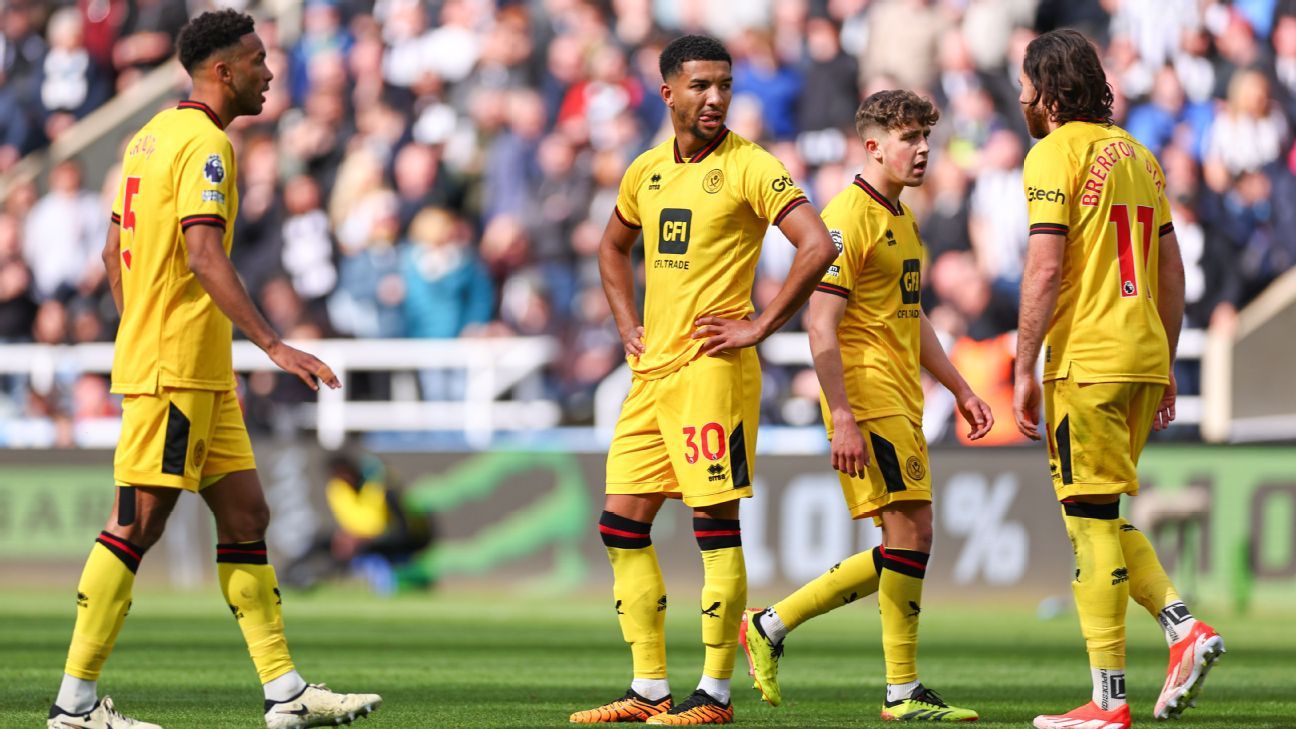
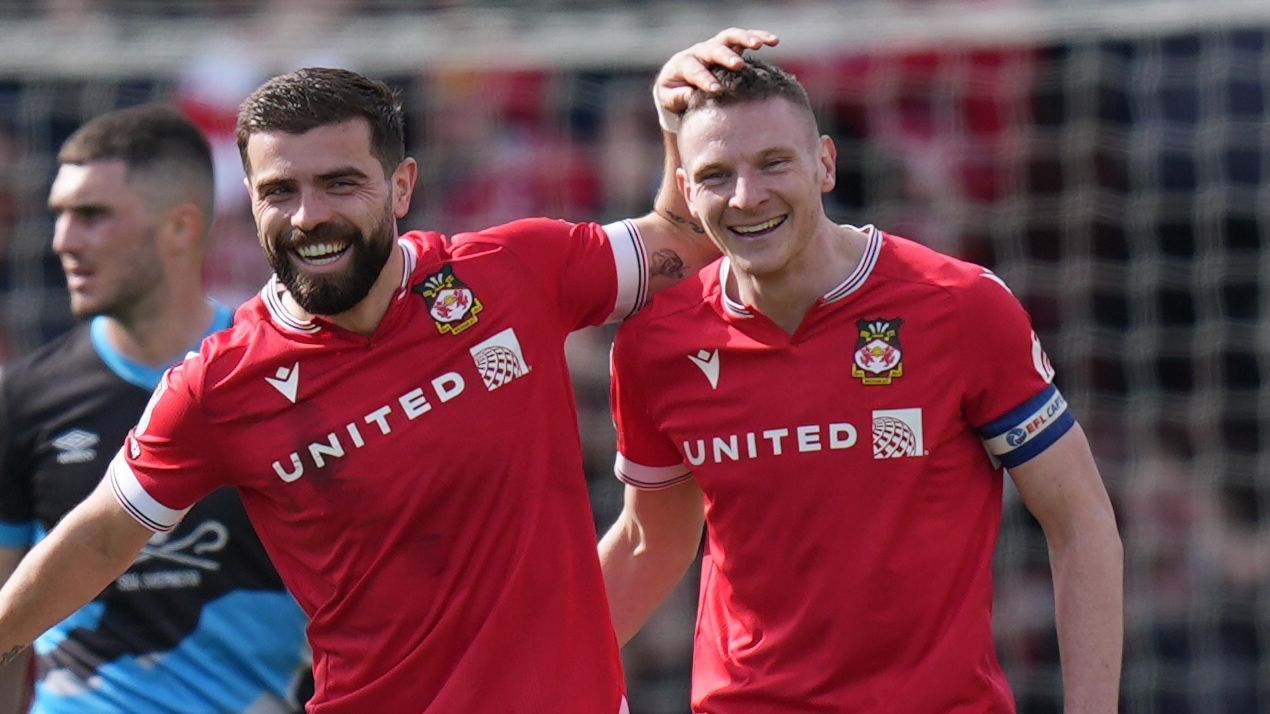





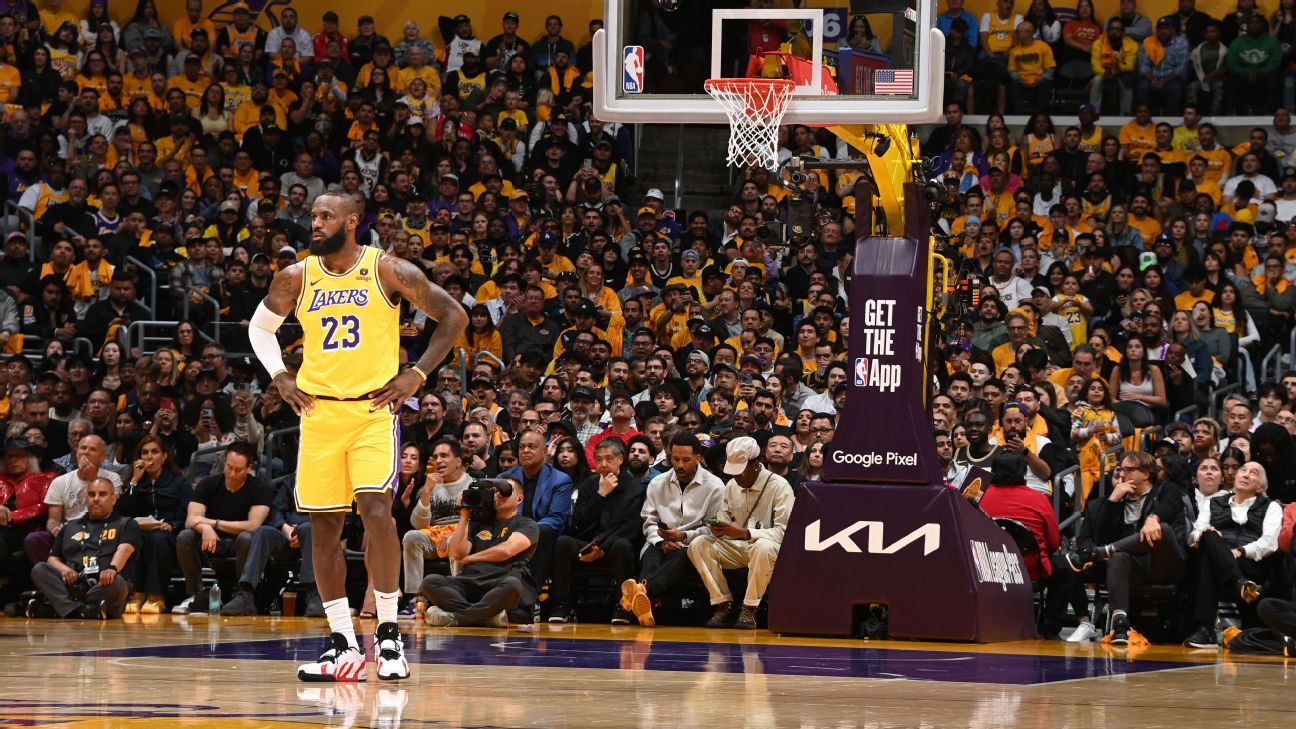
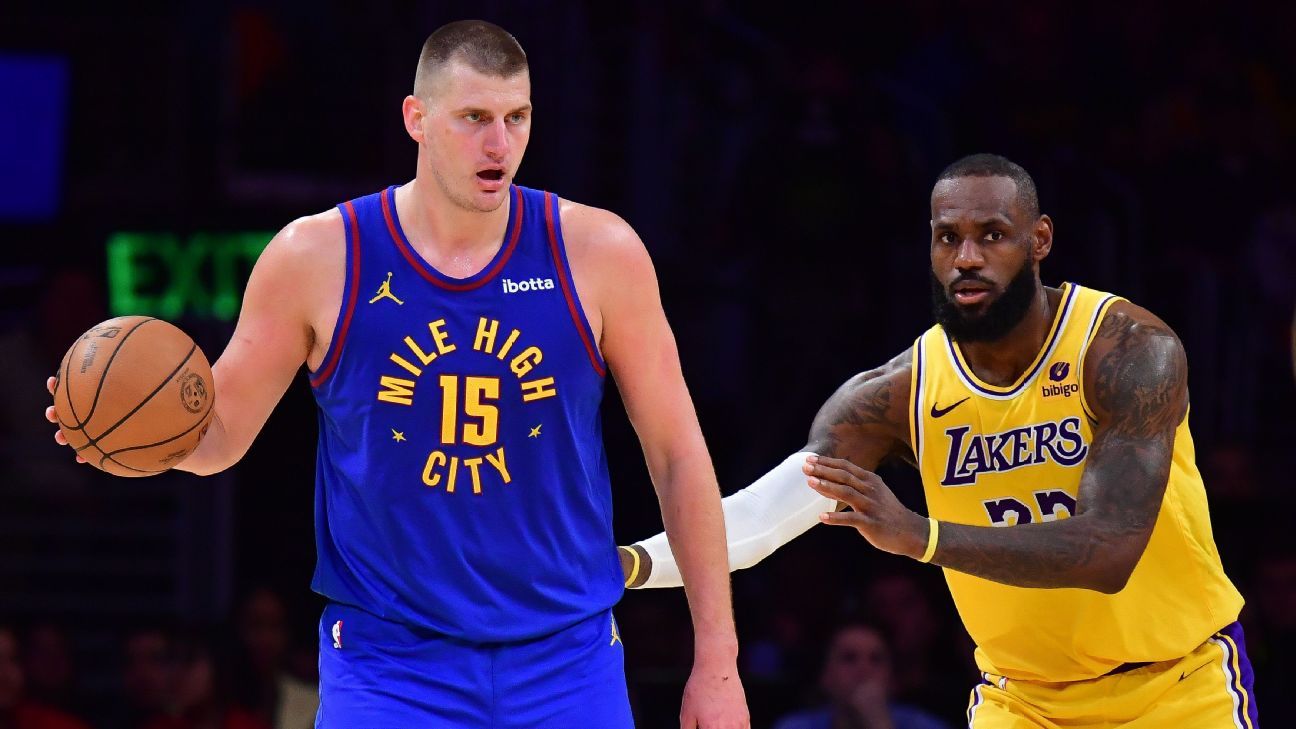
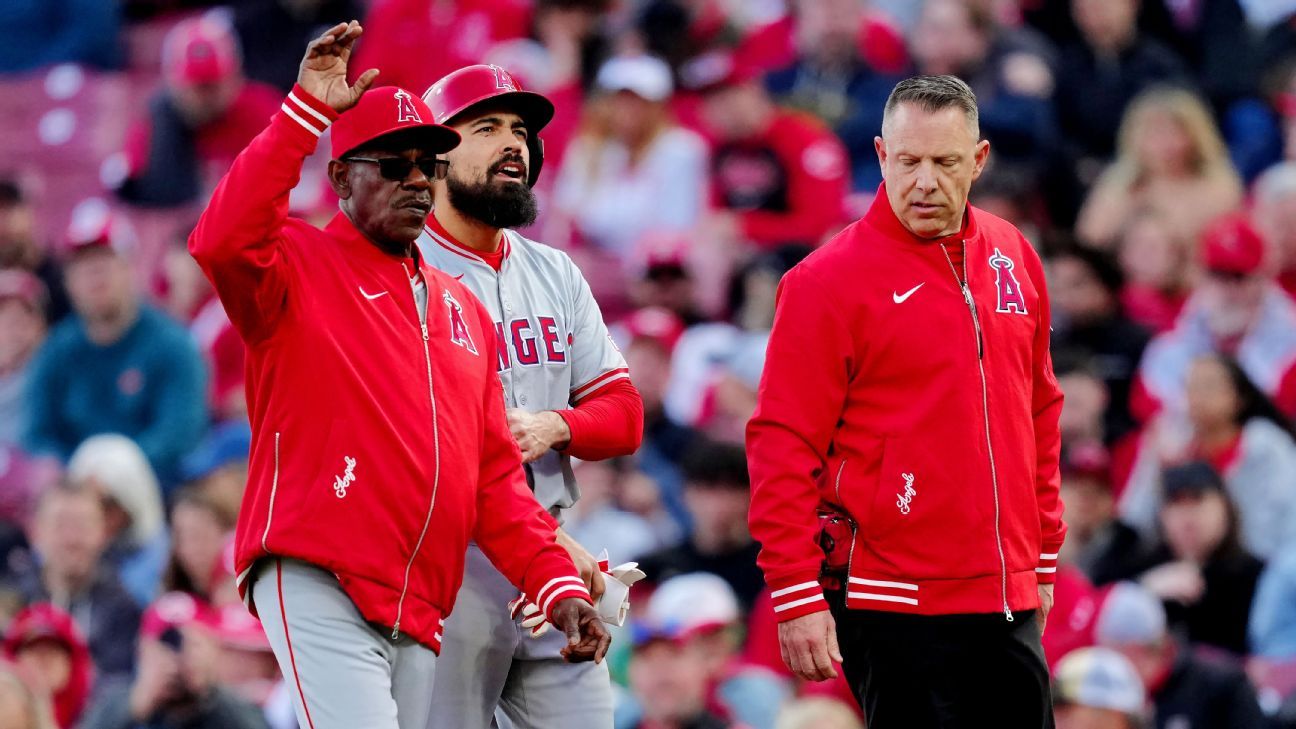


 Phone: (800) 737. 6040
Phone: (800) 737. 6040 Fax: (800) 825 5558
Fax: (800) 825 5558 Website:
Website:  Email:
Email: 






